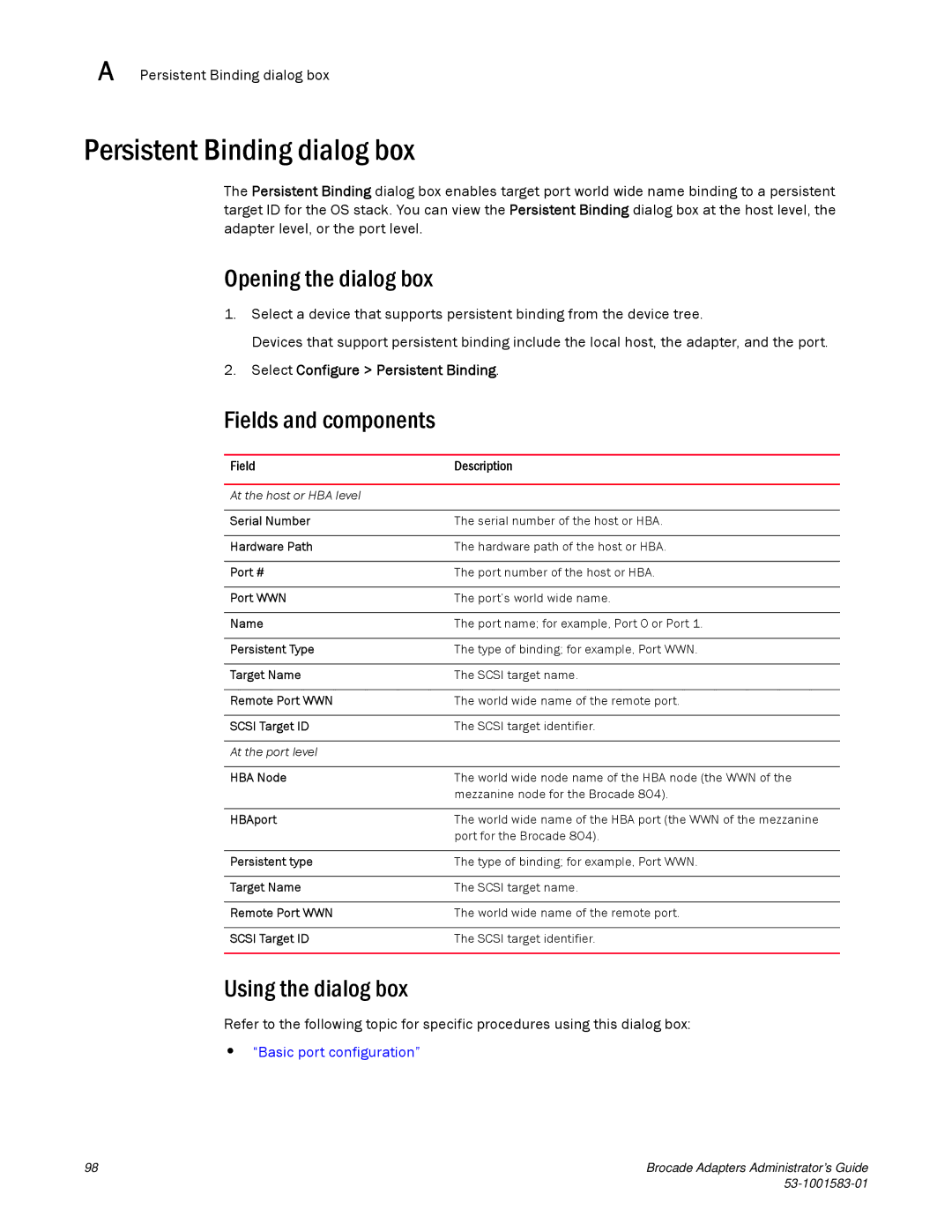A Persistent Binding dialog box
Persistent Binding dialog box
The Persistent Binding dialog box enables target port world wide name binding to a persistent target ID for the OS stack. You can view the Persistent Binding dialog box at the host level, the adapter level, or the port level.
Opening the dialog box
1.Select a device that supports persistent binding from the device tree.
Devices that support persistent binding include the local host, the adapter, and the port.
2.Select Configure > Persistent Binding.
Fields and components
Field | Description |
|
|
At the host or HBA level |
|
|
|
Serial Number | The serial number of the host or HBA. |
|
|
Hardware Path | The hardware path of the host or HBA. |
|
|
Port # | The port number of the host or HBA. |
|
|
Port WWN | The port’s world wide name. |
|
|
Name | The port name; for example, Port 0 or Port 1. |
|
|
Persistent Type | The type of binding; for example, Port WWN. |
|
|
Target Name | The SCSI target name. |
|
|
Remote Port WWN | The world wide name of the remote port. |
|
|
SCSI Target ID | The SCSI target identifier. |
|
|
At the port level |
|
|
|
HBA Node | The world wide node name of the HBA node (the WWN of the |
| mezzanine node for the Brocade 804). |
|
|
HBAport | The world wide name of the HBA port (the WWN of the mezzanine |
| port for the Brocade 804). |
|
|
Persistent type | The type of binding; for example, Port WWN. |
|
|
Target Name | The SCSI target name. |
|
|
Remote Port WWN | The world wide name of the remote port. |
|
|
SCSI Target ID | The SCSI target identifier. |
|
|
Using the dialog box
Refer to the following topic for specific procedures using this dialog box:
•“Basic port configuration”
98 | Brocade Adapters Administrator’s Guide |
|
